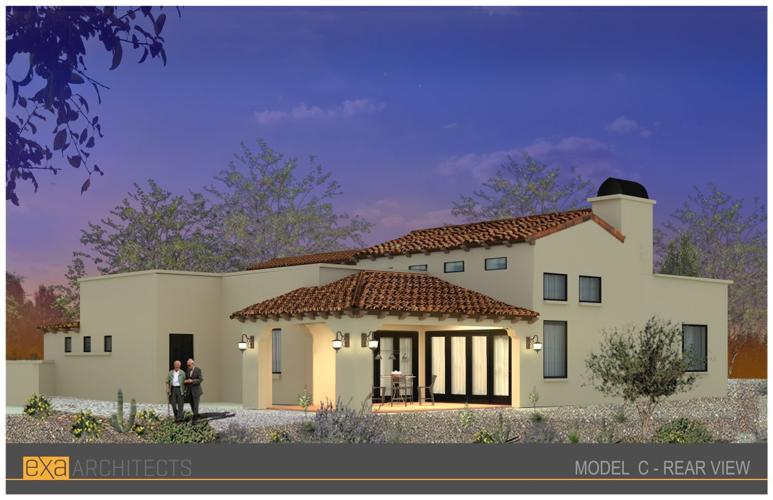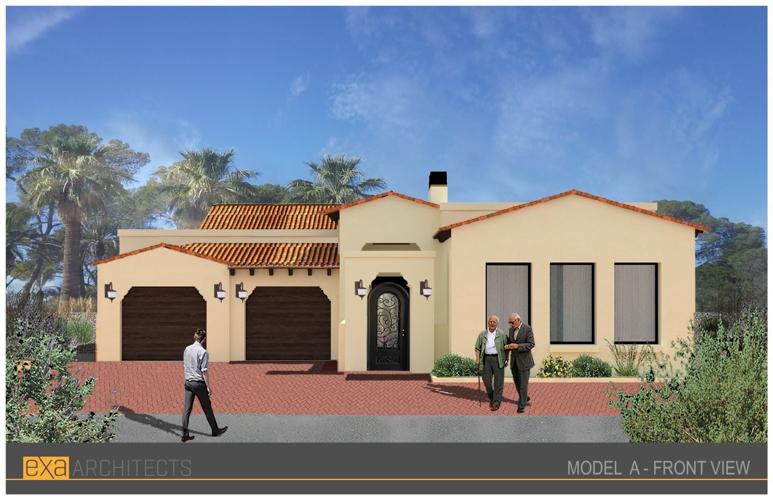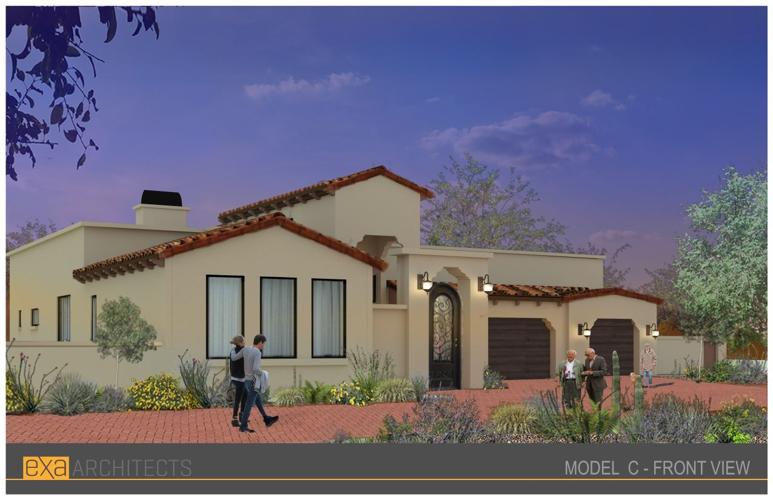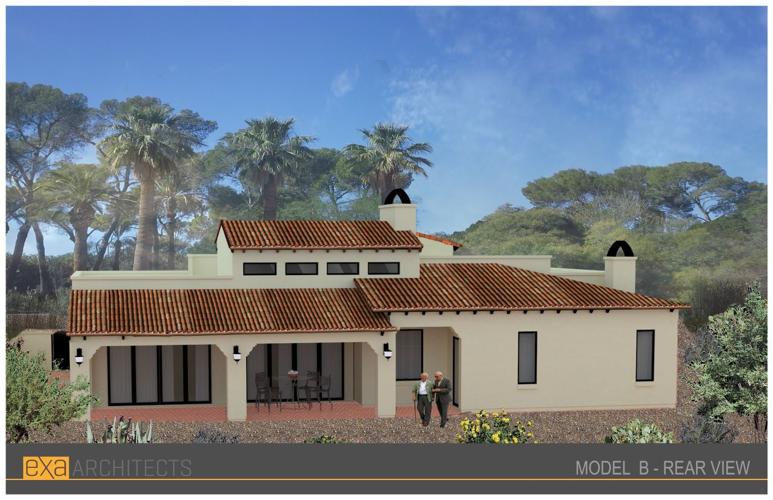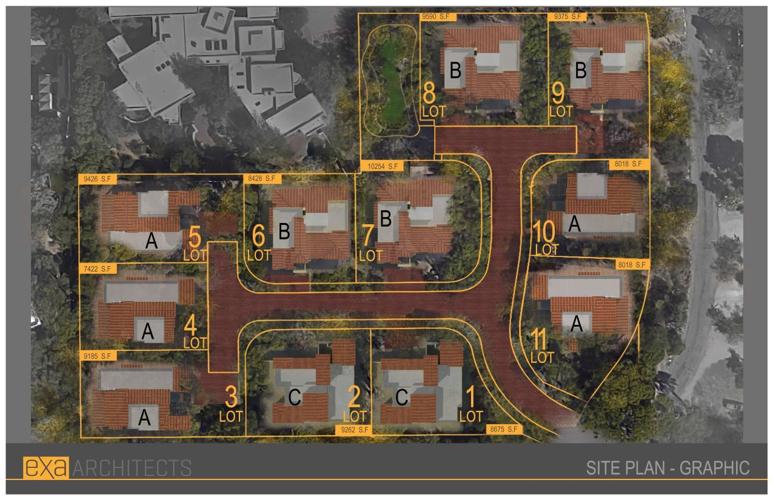The historic Arizona Inn is getting new neighbors.
Tucked behind a fence of oleanders north of the hotel’s parking lot, on Elm Street between Campbell Avenue and Tucson Boulevard, luxury housing is under development.
Called Casa Seton, the project consists of 11 single-story Spanish Colonial homes, matching the architecture of the Arizona Inn, said Jose Ceja, principal architect with Exa Architects. The models are between 2,500 and 3,500 square feet and include three-car garages. Prices will range between $775,000 and $1.1 million.
The homes will be built with an emphasis on natural light to showcase art that residents will hang on the walls, Ceja said. A master suite, guest suite and optional office/third bedroom will be available.
The three-acre parcel had been owned by the Arizona Inn. Instead of putting the property on the market, owners handpicked some local developers to gauge interest and ideas, said investor Bob Gugino, who was approached, as was builder Chris Kemmerly, owner of Miramonte Homes.
They decided to team up, along with Gugino’s partners Rusty Garrett and Jeannine Mortimer.
They bought the land for $1.3 million and have begun prepping the site for utilities.
Zoning allowed for up to 22 homes, but developers decided on a smaller number with bigger lots, Kemmerly said.
“It’s more befitting the Arizona Inn,” he said. “This will be the poster child for infill projects.”
Neighborhood board took no position
Given its location and mature vegetation, developers were braced for some resistance.
That began when they received a demolition permit to tear down a boarded-up 1924 house that once belonged to the founder of La Fiesta de los Vaqueros, Frederick Leighton Kramer.
Historians and some area residents bemoaned the demolition and the loss of open space.
Colette Altaffer’s house is one of two that backs up to the future development.
A resident of the historic Catalina Vista neighborhood since 1992, she said the noise from construction is upsetting.
“They’ve been out there for weeks and you can hear all of the equipment,” she said.
Although the development is surrounded by a construction fence, Altaffer said she’s seen large pine trees come down.
“They were really magnificent,” she said. “The trunk size was so large you couldn’t put your arms around it. How many neighborhoods do you know that could offer that?”
Altaffer said she doesn’t care for the Spanish Colonial theme.
“Given that they tore down a Craftsman house, they should have built Craftsman homes,” she said. “Otherwise, it seems more like a competition versus a compliment to the Arizona Inn.”
Gugino understands the angst and said it was the reason the team chose single-story versus two-story homes so they wouldn’t stand out like sore thumbs.
He wants the new neighbors to be welcome, especially since he will live in one of the homes.
The president of the Catalina Vista Neighborhood Association, Alison Hughes, said the board had not taken a position on the development. There are about 350 residents in the neighborhood.
Calls to the Arizona Inn were not returned, but in a statement to the Star last year, Will Conroy, the great-grandson of Arizona Inn founder Isabella Greenway King, said the land-sale proceeds would fund necessary work on the hotel that had been deferred.
Conroy approached attorney Larry Hecker to quietly “put the word out to those few good local builders and developers we felt might best understand and value our neighborhood and would propose appropriate, viable, high-quality ways forward for the property,” his statement read.
Arizona Inn viewed
as an amenity
Given the volume of interest that has already been expressed, investors expect the homes to sell quickly.
The demographic is a buyer who wants to come down from the Foothills or out of a five-bedroom house, Gugino said.
“A lot of people have expressed interest in putting up their guests at the Arizona Inn instead of having a guest room,” he said. “They see the Arizona Inn as an amenity.”
Kemmerly said the lure of downtown is a big motivator for buyers, who will be within walking distance of the streetcar stop on Helen Street, just west of Campbell Avenue.
“And, they can walk to the UA games,” Gugino said.
They expect executives from Banner Hospital and the University of Arizona to be customers and hope to start signing contracts in April, with the project built out by early 2017.
The ingress-egress road, Potter Place, will be widened to two lanes and access will be from Elm Street.
Updates on the development can be found at the Miramonte Homes website, miramontehomes.com by clicking on the “communities” button.


